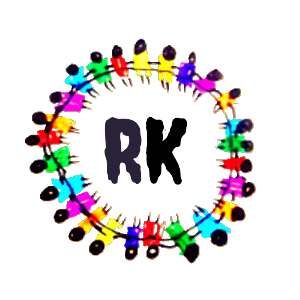In Python, everything is an object – yes, even numbers, strings, and functions!
Let’s understand what objects are, how they work, and how you can create your own.
🔹 Step 1: What is an Object?
An object is a collection of data (variables) and behaviors (functions/methods). Think of an object as a real-world thing that has:
- Properties (like name, color, age)
- Actions (like speak, walk, drive)
📌 Example: A Car is an object. It has properties like brand, model, color and actions like start(), stop(), drive().
🔹 Step 2: Objects Are Created from Classes
A class is like a blueprint. You use it to create objects.
📦 Class = Design
🚗 Object = Real item built from that design
🔹 Step 3: Define a Class in Python
class Person:
def __init__(self, name, age):
self.name = name
self.age = age
def greet(self):
print(f"Hi, I am {self.name} and I am {self.age} years old.")
Explanation:
- class Person: → defines a new class called Person
- __init__() → a special method that runs when an object is created (like a constructor)
- self → refers to the current object
- greet() → a method (function inside the class)
Step 4: Create Objects from the Class
p1 = Person("Asha", 25)
p2 = Person("Ravi", 30)
p1.greet() # Output: Hi, I am Asha and I am 25 years old.
p2.greet() # Output: Hi, I am Ravi and I am 30 years old.
Now, p1 and p2 are objects (also called instances) of the class Person.
🔹 Step 5: Add More Methods
You can add more functions (called methods) inside the class:
class Person:
def __init__(self, name, age):
self.name = name
self.age = age
def greet(self):
print(f"Hi, I am {self.name} and I am {self.age} years old.")
def checkvote(self):
if(self.age>=18):
print("Eligible to Vote")
else:
print("Not Eligible to Vote")
a1=Person("Asha",10)
a1.greet()
a1.checkvote()
| Concept | Real Life Example |
| Class | Mobile phone design |
| Object | Real phone in your hand |
| Attribute | Brand, model, price |
| Method | Call, message, camera |
Example :
class student:
def __init__ (self,rollno,stname,m1,m2,m3,m4,m5):
self.rollno=rollno
self.stname=stname
self.m1=m1
self.m2=m2
self.m3=m3
self.m4=m4
self.m5=m5
def result(self):
total=self.m1+self.m2+self.m3+self.m4+self.m5
print("Total = ",total)
def welcome(self):
print("Welcome : ",self.stname)
s1=student(1001,'Raja',100,100,80,70,90)
s2=student(1002,'Kumar',100,100,80,100,90)
s1.welcome()
s1.result()
s2.welcome()
s2.result()
Output
Welcome : Raja
Total = 440
Welcome : Kumar
Total = 470

Leave a Reply